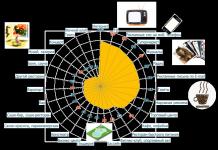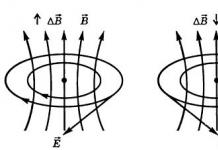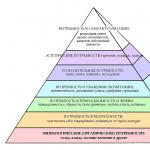Foliage covered the paths and paths, and in the morning the puddles were covered with a thin sheen of ice. Autumn has come to our garden. And we are still drawn to the dacha. It seems that everything can’t be done before winter. But the eyes are afraid, but the hands do.
For those whose plots are not very fertile, experts recommend digging up half the plot to increase the thickness of the fertile layer and. Be sure to put it under digging mineral fertilizers: phosphorus, nitrogen, potassium at the rate of 10 g per 1 sq. meter. Next year, in such a bed you can grow carrots, potatoes, beets, beans, peas, tomatoes, horseradish, and strawberries. Or plant currants.
The second half is dug up to a depth of 30-40 cm, if the site is new or has been abandoned for a long time. At the edge of the plot, dig a furrow 40 cm deep. Next to the width of a shovel, remove the humus part of the soil and dump it at the bottom of the furrow with the turf facing down. The remaining part of the soil is removed and poured on top. Compost, any humus, peat are added at the rate of 1 bucket per 1 sq. meter.
Compost can be made from fallen leaves. However, experts do not recommend using leaves for its preparation. garden trees. So on a dry, sunny day, you’ll have to take a garden cart and a rake and go to a park or forest.
Fallen leaves contain macro- and microelements. But they have different effects. Some stimulate growth, others cause them to wither. Rotted leaves of birch, aspen, oak, cherry, apple, and raspberry are harmful to the garden. The leaves of elderberry, red and white currant, ash, linden, red rowan, maple and linden are useful.
But the needles of coniferous trees are especially useful. They contain a huge amount of valuable substances that are useful not only for trees, but also for people. It is best to compost pine needles together with leaves of garden trees, mixing the mass thoroughly. Coniferous compost is added along with a deoxidizer, which you need to buy in the store. If you are going to grow cranberries, lingonberries, and blueberries on your plot, then such compost is simply irreplaceable. For these crops it should be mixed with peat.
Leaves for preparing compost are placed in dug trenches as follows: a layer of soil, a layer of foliage. All the weeds you collect from your garden are also added to the compost. Peels from potatoes and other vegetables are also added there, eggshell, drunken tea leaves. If it rains, then nothing additional is required. And in dry weather, trenches with leaves need watering.
If possible, add manure or bird droppings to the water for irrigation. Composting lasts two years. After which the compost is sifted through a mesh with large cells. What does not rot is used in the next compost.
Two-year compost is used when planting trees, shrubs, vegetables, and flowers, both garden and home.
Digging up the soil is useful because it makes you defenseless against cold weather and birds. harmful insects, hiding in the leaves and in the upper layers of the soil.
Berry bushes and perennials need to be transplanted to a permanent location in the fall.
In the fall, ditches are dug for drainage up to 30 cm deep. They dig along the edges of the site and in the middle, so that in the spring, due to the abundant melting of snow, the water does not flood the buildings and plantings, but flows into the ditches.
The garden needs organic fertilizers, compost provides them. It improves physical and chemical properties soil, activates the vital activity of beneficial microelements. Experienced gardeners also use green manure– plowing the green mass of lupine, seradella and other annual herbs from the legume family. This method enriches the soil with organic matter, nitrogen and other nutrients. Green manure is especially useful for sandy loam and low-humus sandy soils.
In autumn, all annuals are removed. All leaves, stems and other debris from the flower beds are removed and burned to prevent disease. The lashes of hybrid tea, polyanthus and miniature roses are cut in half. The leaves of the roses are torn off in front of the shelter. If this is not done, the roses may die from fungal diseases. Weak shoots are also removed.
You need to check the bark well fruit trees, remove detected nests of harmful insects. Clean and whitewash all damaged and insect-infested areas.
If you have the opportunity to visit your dacha in winter, you should hang feeders and tame the birds. Over the winter they will deal with almost all pests. If this is not possible, then you can leave the stems with bolls of annuals on the site. Birds will eat them with pleasure, and at the same time destroy insects.
Before winter, some gardeners, when the soil freezes to a depth of about 2-3 cm, sow seeds early radish, rutabaga, turnips, beets, carrots, parsley, celery, dill. The beds are prepared in advance, adding all the necessary fertilizers. The furrows for sowing seeds are made 2.5-3 cm deep and 2–2.5 cm wide. Seeds are sown during the thaw and twice as much as in the spring. Some vegetable growers even plant potatoes before winter. But in our zone risky farming Still, you shouldn’t plant the entire field with them. Otherwise in the spring you may be left without potatoes and without seeds...
It is better to select a small area for the experiment. Make a furrow and place straw manure or dry grass at the bottom. Place the tubers on this mat and cover them with soil. Tubers must be late varieties, green in the sun and medium-sized. The advantage of this planting is that in the spring there is no need to dig. Under successful circumstances, the tubers will be hardened and the harvest will be earlier.
And in late autumn you can pamper yourself assorted autumn vegetables.
Taken green tomatoes, apples of autumn varieties, carrots, onions, cauliflower, green beans. All this is cleaned, washed, placed in jars and filled with marinade: 2 tbsp per liter of water. spoons of sugar, 2 tbsp. tablespoons salt, 4 black peppercorns, 4 allspice peas.
All this is boiled for 10 minutes and 5 tbsp is added. spoons 5% table vinegar. Bring to a boil and simmer for 5 minutes.
The jars are covered with lids, liter jars are sterilized for 10 minutes, two liter jars for 15 minutes, three liter jars for 20 minutes. Seal, turn over and leave until completely cool.
This is probably one of the most delicious gifts of late autumn.
How do you deal with fallen leaves from the garden? Do you take it to a landfill or burn it? I propose to do it differently - to prepare a wonderful compost , which will help increase soil fertility on the site, achieve bountiful harvest and save on your purchase organic fertilizers.

Fallen leaves can be used to make excellent compost.
Advantages and disadvantages of sheet compost
It’s hardly worth talking about the outstanding advantages again humus , prepared on the basis manure and bird droppings , - such organic fertilizers have no equal. But the luxury of using them without any financial investments can only be afforded by rural residents who keep on their farms livestock and a bird.
For “urban” summer residents, purchasing manure and droppings today puts a significant dent in their pockets. Leaf compost is inferior to such fertilizers in terms of nutritional value, but cultivated plants respond well to it and will never refuse such yummy food. So why spend money on buying manure when you have free material at hand?

Leaf litter is a free raw material for preparing organic fertilizer
Matured leaf compost quickly saturates the soil with humic compounds and microelements and effectively restores soil fertility. When embedded in the soil, it perfectly improves its structure: it adds moisture capacity to sandy soil, and breathability to clayey soil.
Not completely decomposed leaf mass (young compost) is an excellent product for mulching vegetables and flower crops. Flowers and vegetables are not affected by diseases , characteristic of fruit trees and berry growers. Therefore, in this case, even leaves from diseased garden plants can be used to prepare compost.

Young compost can be used to mulch vegetable beds
The only drawback leaf compost- acidic reaction. When applied to the soil, it will reduce its pH level, and therefore will require the use of deoxidizers (dolomite flour, lime, chalk, ash, etc.).
Circulation of leaf compost on the site
Depending on the preparation technology and the tree species from which the foliage was taken, it will take 1.5-2 years for the leaf compost to fully mature. If you do not help the compost to mature, this process will take longer.
To ensure that you have such valuable fertilizer at your fingertips every season, I suggest building 3 composting bins on your site at once. In the first one, every autumn you will lay the next batch of fresh litter. At this time, last year’s mixture of leaves and soil will be ripening in the second compost bin. And by this time the third tray will provide you with fully matured compost.

It is better to build 3 compost bins on the site at once
You can use the contents of the third compost bin to fertilize the beds in the same fall, or postpone the procedure until spring. Do not delay using mature compost, because the third tray is next summer needs to be released. It is needed to transfer the ripening leaf mass from the first “barn” into it. By transferring the contents of the first compost bin to the empty one, you can move the contents of the second tray into the first.
This “shuffling” of the compost will significantly speed up its ripening. By shoveling the contents of compost bins, you saturate it with oxygen, which is necessary for beneficial microorganisms and earthworms for normal life, and without their help it will not be possible to prepare fertilizer. Transshipment should be carried out at least 2-3 times per season. The work is labor-intensive, but extremely important.

The contents of the compost bin must be shoveled regularly
The lazy option is to make only 1 compost bin. Fill it with leaves and soil, and next season periodically shovel the contents - lay them out on the ground and return them back. Next fall, mulch with young compost. perennials or beds with winter crops. The ripening of such semi-finished fertilizer will continue “in place” in the new season. In the same fall, you can fill the empty container new portion foliage.
Setting up a compost shed
If you spare no expense for your favorite dacha, you can go the most the easy way and buy ready-made compost bins. Such devices will save you from unnecessary hassle, and will for many years help produce valuable leaf compost.

Ready-made compost bins on site
Less wealthy summer residents adapt old barrels, tanks, cast iron baths and even thick garbage bags with a volume of 200 liters or more. The main rule when using such improvised means is holes in their walls, which will provide air flow to the ripening humus mass. The contents of these containers will also need to be shoveled several times a season: transferred from one to another or poured onto the ground covered with film, and then returned back again.

One of the walls of a stationary compost bin must be collapsible or removable
The most labor-intensive option is to build a stationary composting bin with 3 compartments from boards, slate, tin and any other available materials. Be sure to leave gaps in the walls of such a device or make them from a durable mesh. If you are building a tall compost bin, make one side collapsible so that you can easily access the contents later.
Technology for preparing sheet compost
After leaf fall, collect fallen leaves and place them in a tray, covering them with layers of soil 5-10 cm thick. If the foliage and soil are dry, be sure to spill them with water. Owners lawn , they can add mowed grass to the contents - it will speed up the ripening of humus. It is also permissible to place soft-stemmed tops of vegetables and weeds without seeds, as well as kitchen waste of plant origin.

You can add mowed lawn grass to the compost bin.
It's great if you have fresh manure or bird droppings at your disposal. Be sure to add these nitrogenous products to the total mass or spill the contents with a solution based on them. Alternative option– store-bought solution nitrogen preparation (urea, ammonium nitrate etc.), prepared at the rate of 20-30 g per 10 liters of water.
An EM solution will have an excellent effect on the further decomposition of organic matter. Dilute the concentrate in water according to the instructions, and, when adding the organic filling, pour it with the useful solution.
So that in the future you do not have to deoxidize the soil in the beds that you fertilize with leaf compost, smooth out the acidic reaction immediately. To do this, at the stage of laying organic matter, sprinkle its layers with wood ash , dolomite flour, slaked lime or chalk.

To prevent you from having to deoxidize the soil in your garden beds in the future, sprinkle layers of compost with wood ash, dolomite flour, slaked lime or chalk
Over the next season, in addition to regularly shoveling the ripening compost, you will need to periodically moisten it with water. A solution of mullein, urea or an EM preparation, with which you moisten the contents a couple of times a season, would be useful. Be sure to take care of the lid on the compost bin if you made it yourself. It will be needed to protect the organic mass from drying out in summer heat and from being washed out during periods of prolonged rain.
You can do it easier - cover the compost mass on top thick film and make holes in it for air access. And don’t forget to collect a handful of earthworms from the garden and throw them in a pile. After a short time, they will multiply in huge numbers in the nutritious feather bed and accelerate the ripening of the compost.
How to tell if leaf compost is ripe
Fully matured leaf compost is a loose, homogeneous mass. In it you should not find the skeletons of leaves or unrotted remains of other waste that were placed along with the litter. Mature compost will not contain earthworms: they will leave the compost bin when it runs out of food. Distinctive feature mature leaf compost – a pleasant “forest” aroma.

If the compost contains earthworms, which means he is not yet ripe
Which leaves are not suitable for making compost?
Unfortunately, not all leaves are suitable for making compost. The foliage of some tree species contains a lot of tannins, which will further affect negative influence for development cultivated plants. You shouldn’t use waste from under walnuts, lingonberries, blueberries, sumac and scumpia - it is better to use it for preparing ash. Avoid oak and hazel, if you decide to replenish foliage in the forest.
Leaves will slow down the compost ripening process maple, chestnut and hawthorn - they are very dense. It is better to first shred such foliage with a garden shredder and only then put it in a compost bin.

Maple, chestnut and hawthorn leaves will slow down the compost ripening process
Properly prepared leaf compost will be an excellent help in summer cottage farming. Such a natural product will have the best effect on the health of cultivated plants, will help achieve a generous harvest and will allow you to save on the purchase of store-bought fertilizers. Don't refuse this one profitable idea! Besides, now is the best time the right time bring the idea to life.

Leaf compost will make gardening activities easier
Surely, among the readers there will be those who have already mastered the technology of preparing sheet compost and managed to appreciate its advantages. Share your experiences and impressions with us in the comments.
Hello, dear friends!
Fallen leaves, which accumulate in large quantities in the fall in every garden and on personal plot– an excellent material for future fertilization of most plants. After all, properly prepared compost from leaves contains high doses of nitrogen, calcium, phosphorus and potassium - the main nutrients for all crops, as well as a whole complex of macro- and microelements, organic matter, humus.
It is natural that chemical composition compost prepared by trees differs from each other. It is believed that the litter berry bushes and fruit trees are richest in valuable biologically active substances.
Laying material for composting
If an oak grows on your site or next to it, then its foliage can only be used in combination with other plants (no more than 15% of total mass). Oak litter contains a high concentration of acids, which in large quantities are harmful to garden crops. Collected leaves should be crushed, since the fine fraction rots much faster, turning into valuable fertilizer. For this purpose, many gardeners use a manual lawn mower.
To enrich the future compost, grass cut from the lawn is also added to the compost heap along with the shredded leaves. This will allow you to save time and money in the future on adding nitrogen compounds to the rotting mixture. In the absence of grass, ready-made ones are used to prepare the substrate. nitrogen fertilizers or collected kitchen waste, in particular, vegetable peelings, drunken tea, coffee grounds. Never add meat, bones or bread to your compost.
The collected foliage is loaded into (recommended size 1 x 1 x 1 m). During installation, each layer of foliage is interspersed with a layer of mowed grass and soil, simultaneously moistening them. To activate the decomposition processes, the contents of the compost bin need to be spilled with mullein infusion once, and the top closed tightly. plastic film and leave until next season. Make sure that the mixture is constantly moist, for which the compost is regularly watered. In the middle of summer next year The compost needs to be mixed.
Alternatively, you can use dense leaf litter to make compost from leaf litter. plastic bags with holes pierced in them for air circulation. In them, fallen leaves are densely packed in layers, interspersed with grass and soil mixture, not forgetting to thoroughly moisten the substrate. Watering the humus infusion at the very beginning of ripening is mandatory.
Using garden leaf litter compost
The readiness of compost is determined visually - large number, the mass has a dark brown color, a uniform crumbly structure and a specific earthy smell. As a rule, the fertilizer is completely ready by the beginning of September.
Particularly valuable leaf compost for light sandy and heavy clay soils, always in need of improving their structure and physical qualities. On sandstones, the addition of compost helps to increase the soil’s ability to retain moisture, which is so valuable for plants. On heavy soils, compost structures the soil, enriches it with valuable humus, making it lighter and more permeable to air and moisture.
Compost from litter is a valuable organic fertilizer that is used for incorporation into the upper layers of soil during autumn and spring digging, for planting seedlings of trees and shrubs, for adding to planting holes when planting seedlings, for insulating beds for the winter (rose bushes, winter garlic, carrots sown before winter, etc.), for mulching the soil and row spacing during the summer. On this type Trees and most shrubs, flowers and vegetables respond equally well to compost.
Use garden waste to create valuable, environmentally friendly and economical fertilizer for your gardens. Have a good harvest!
With the onset of autumn, most owners of private houses or summer cottages They begin to collect and burn leaves. Passers-by at this moment, walking along the street, are indignant that they can’t breathe and there is impenetrable smoke, and their clothes need to be aired for 24 hours.
There are several ways to dispose of fallen leaves. One of them is useful as a fertilizer and can be made in a maximum of 2 weeks while it is still standing warm weather. You just need to hurry up: prepare a compost box and a bottle of EM preparations.
Benefits of composted leaves
Burning leaves and adding ash to the soil is good, because it contains nutrients such as phosphorus, potassium and calcium, and many other trace elements, necessary for plants for development.
But in wood ash there is no single element without which it is impossible to grow crops and healthy plant– nitrogen. When burned, it completely evaporates into the atmosphere.
Another way to use tree litter is to make compost from tree leaves. Nutritional value such fertilizer is much higher. Firstly, because bacteria multiply in it, which then enter the soil and continue their work producing humic acids, which are completely absorbed by plants and restore the fertile layer.
Secondly, dry raw materials can be mixed with herbs and return lost nitrogen. You can use weeds or green manure as greenery. Mowed lawn grass will do.

Composition of compost from fallen leaves
Dry leaves are a carbon-containing component that takes a very long time to turn into humus unless nitrogen is added to it in the form of greens or urea. The main thing is to maintain the correct proportions of the components: For each nitrogen part, 3 carbon parts must be added.
If you use only litter for composting, the leaf humus will ripen about 2 years. When using various biodestructors - year. This is not profitable, since fertilizer must be applied annually, or good harvest can hardly be expected.
To speed up the process, you need to collect leaves from the area - any leaves. If an oak grows or coniferous trees, then their total number should not exceed 15% of the total mass. The fact is that these substances increase the acidity of the fertilizer. If there are a lot of them, then leaf humus will be unsuitable for many plants that prefer a neutral or slightly acidic environment.
Video: What to do with fallen leaves
There is a recipe that allows you to use only oak leaves for composting, but it contains chicken manure, the pH of which is above 7 units. These two components balance each other, so the acidity in leaf humus remains within acceptable limits.
Preparation of fertilizer
Before preparing leaf humus, you need to prepare the raw materials:
- clear the area of weeds and move everything closer to the pile where the components will be placed;
- inspect the tops vegetable plants for fungal diseases, if the greens are clean, then you can use them;
- if the lawn has recently been mowed, then leave the grass in the sun for 2 to 3 days to dry. If lawn grass is the only nitrogen component, then it is laid without drying.
All components are crushed: the smaller the better. For example, Western farmers use special devices - compost grinders. In our country, this role is most often performed by a shovel or pruning shears.
A type of pile for composting leaves
It is advisable to make a pile for leaf humus with small holes, since the fine substrate will simply spill out of the box. Better to use for this plastic barrel, which must be secured to the pipe and rotated periodically to mix the components.

If the issue of cooking speed is not urgent, then an ordinary barrel will do, but you will need to shovel the contents manually - with a pitchfork.
How to compost faster
Most summer residents are interested in how to make leaf humus quickly, before autumn is over. Answer: it won’t work without accelerators. Baikal EM-1 or Siyanie preparations are used as biological additives. Perhaps other biodestructors with similar effects can be found in local stores.

The solution is made according to the instructions and applied to each layer of ingredients:
- A layer of soil is placed on the bottom of the barrel about 20 cm. Watered with a solution of microorganisms.
- The next layer is leaves. 20 – 30 cm and also spill it with a biological product.
- Next is the nitrogen component – grass, weeds or green manure layer 10 cm.
- Priming 5 – 10 cm.
- Leaves again.
- The last layer that covers all components should be primer.
After everything is folded, the compost is left for 3 days. During this time, the processes of decomposition of organic matter by bacteria begin in the barrel. After 3 days, it is necessary to turn over all the components so that the microorganisms receive oxygen and continue to multiply and eat plant debris.
Next, you need to loosen the compost every other day, leaving the lid of the barrel open. The more air gets into the compost, the faster the bacteria will process the vegetation into leaf humus. Be sure to monitor the humidity so that the ingredients do not dry out, otherwise the microorganisms will not work effectively.
When can it be used in the garden?
2 – 3 weeks after laying the components at proper care the fertilizer will be ready. It must be brown and smell nice of the earth. Fertilize leaf humus Any crops are possible. Usually compost is dug with top layer land in beds, under bushes or fruit trees.

What to do with fall foliage in the garden? An article from the website BOTANICHKA.ru will answer this question.
The autumn leaf is so elegant..., but it must be removed from the garden and there are alternatives to this technique in preparing a summer house or adjoining plot no by next spring. This technique is necessary, since in the space limited by the fence there is a natural accumulation of negative microflora in the form of various fungal, bacterial and other diseases, and pests that hibernate in comfortable conditions in the form of pupae, larvae, spores, adults, etc. At the same time, according to the laws of nature, everything that is removed from the soil must be returned to it. Otherwise, within a few years, the sanding of the soil and a decrease in its natural (and effective) fertility will be clearly visible, when mineral fertilizers will no longer be as effective as they were several years ago.
How can this be? You just need to economically dispose of the “manna from heaven” that fell from heaven.
Making compost from autumn leaves.
To prepare compost from autumn leaves on the site, you need to make several compost pits (pits - symbol, since it could just be a place, a box, a bag, etc.):
for aerobic rapid composting,
for anaerobic, longer fermentation, but also of higher quality in composition,
humus pit for maturing manure and other animal and plant waste,
sick waste pit,
waste incineration site.
In your garden first aid kit, you should definitely purchase and prepare working solutions of preparations of living effective beneficial soil microhabitats. These are the drugs “Baikal EM-1”, “Ekomik Harozhny”, “Shine” and others. They destroy pathogenic soil microflora and at the same time promote the processing of organic matter into humus compounds.
If there are no EM preparations, you can use tank mixtures of biofungicides and bioinsecticides:
Gamair + phytosporin + gaupsin,
phytosporin + gamair + alirin,
baktofit, trichodermin
mikosan + phytosporin + boverine or bicol.
Biofungicides can be used in tank mixtures with bioinsecticides (haupsin, bicol, boverin, verticillin and others). Before preparing tank mixtures, be sure to check the preparations for compatibility. They effectively destroy infectious microflora and pests (at different stages of development). The resulting organic matter will be free from pathogenic infections and pests.
The pits do not have to be made huge, but it is necessary to use the finished product as an organic fertilizer for the garden and berry garden. During the summer, each of the pits is filled with appropriate waste.
Aerobic compost from autumn foliage

For aerobic compost on the soil surface from large branches (from spring pruning), wood chips, poles and other waste are prepared for air drainage. By prying up the drainage layer with a pitchfork, they increase the access of oxygen to plant residues and accelerate their fermentation or rotting. Vegetable components for fermentation are poured on top in layers. These are usually young weeds, leaves of tree crops, post-harvest tops, lawn clippings and other light waste. Layer 15-20 cm, pour a couple of shovels of earth with a working solution of EM preparations (any). Add the next layer. The heap will gradually increase and after 1.5-2.0 months it is ready to be transferred to vegetable beds.
Collection and preparation of fallen leaves for composting
Experts working with EO preparations suggest preparing 3-day compost for the beds. It is suitable for processing autumn leaves.
A pile prepared in the manner described above, where it is folded in layers autumn leaves and tops (healthy) from garden beds, mowed grass from lawns, watered hot water at +80ºС, after 5-6 hours add the working solution of Effective microflora (EM). The pile is stirred slightly. The burt “lights up”. After 2 days, water again with sufficient quantity and lightly turn the pile. After 3-4 days, the EM solution is spilled again and this EM compost (“green” unripe) is transferred to the beds for digging. During the warm period, especially in the south and in warm areas middle zone(September - October), the foliage in the soil treated with the EM preparation will completely rot and by spring the soil will be light and fluffy. It is lightly removed from the soil crust with a rake and when optimal temperature begin sowing or planting.
Anaerobic compost from autumn leaves
A hole 40-50 cm deep is prepared for anaerobic compost. Crushed organic matter (weeds, tops, other waste) and the same autumn leaves are laid in 15-20 cm layers. A 3-5 cm layer of soil is poured between the layers of organic matter. Each soil layer is slightly moistened with water, then watered with a working solution of any EM preparation. The total humidity of the compost heap is 50-60%. All components are carefully compacted to limit the access of oxygen. In such a heap the temperature should be kept at +25..+30ºС. If the temperature rise is rapid and higher, the pile is wetted. After compacting, the pile is covered with plastic wrap and even sprinkled with a layer of grass. Fermentation lasts from 3 to 5 months (not years), and “green” compost can be added to the soil after 3-4-5 weeks. The disadvantage of “green” compost is a large amount of silage, which makes soil cultivation difficult, but such compost retains a huge amount nutrients, anaerobic EM microflora develops better, which will process deep roots and other organic residues into humus.
Manure storage facilities

Almost every dacha has a place to store manure and chicken droppings. Usually this is a shallow hole so that the slurry does not spread throughout the garden and supply food to nearby growing weeds. The bottom is covered with roofing felt or several layers of film to preserve slurry. A box made of any materials (wood, plastic, remnants of slate, etc.) is knocked down and installed around it. The manure rots within 2–3 years and is applied to crops that are responsive to the application of rotted manure. To increase the organic component of the soil, once every 4-5-6 years, unrotted manure is applied to the garden beds and incorporated into the soil. If there is no manure, composts are used.
The application of manure can be combined with digging up autumn leaves scattered over the beds from under fruit and forest trees.
Destruction and disposal of diseased tops, carrion and leaf litter
The owner of a dacha or private property can act in his own way regarding diseased tops and fallen leaves. Burn it immediately (in case of a viral infection, it is necessary) or put it in a separate hole for 2-3 years at the end of the plot (away from the garden).
The burning area should be in one place so as not to burn the soil in a new area every year: when burning, not only diseases and pests are killed, but also beneficial microflora, beneficial soil inhabitants (worms, etc.).
In organic farming, a pit for infected garden tops and leaf litter is a must. Ash from burnt leaves and tops is not as useful (although it contains a large range of microelements) as organic matter. And returning it to the soil is the first law of geoscience: as much as you take, return as much.
Carrion infected with fungal, bacterial and other diseases, autumn leaves, tops of tomatoes, eggplant, cucumbers, potatoes, onions and other vegetable and garden crops are placed in the pit. Interspersed with a thin layer of soil. Literally 2-3 shovels per 10 cm layer of waste. Each layer is spilled with a working solution of EM preparations of high concentration (see recommendations), biofungicides and bioinsecticides are added. The embedded components are heated to +80ºС. Ferment for 1.5-2-3 years, constantly maintaining high temperature and adding solutions of EM drugs. This biocompost can also be used for trees and shrubs or lawn grass.
If the garden consists of 8-10, or even more trees, and there are also 1-2 walnut trees growing, plus a berry garden and a lawn, then naturally, it will be difficult to place all the foliage in compost heaps. What to do?
How to completely clear the garden of fallen leaves?
You can do this as follows:
If the foliage is healthy and the soil under the trees is not tinned, it can be treated on site with a tank mixture of biological products. Leave for 1-2 weeks or treat with medications for 2-3 weeks in a row, stirring each time. Tedding will prevent the foliage from caking, and increased air flow will promote better overheating. These processed leaf wastes in late autumn (preferably early spring after the snow melts) embed into the soil by shallow digging or hoeing. They will first serve as a good mulch, and then as an organic fertilizer.
Collect leaves with a rake, mower, leaf blower or garden vacuum cleaner with a leaf shredder and spread them over the beds and dig them up.
From personal experience.

For many years I have not been able to use organic fertilizers in my dacha. Every year, when digging in the fall, I dig up the first row of the bed and place it in the resulting groove. leaf litter, small weeds, garden tops and add soil to the next row. And so on throughout the garden bed. By spring everything is rotting. I remove the soil crust with a rake and after the onset of stable heat I plant and sow garden crops. After a year I use biocompost. I bring in a bucket per square meter. m area.
Trees usually shed their leaves gradually and autumn cleaning is not enough. By spring, a sufficient amount of foliage, compacted under the snow, accumulates in the beds under the trees and on the paths. I rake the leaves in the beds gradually, as necessary, to free up the soil for planting or sowing, and send them to compost heaps. Or I dig it up along with half-rotten leaves if the soil has not been dug up since the fall. If the leaves are not needed, then I send them to the compost.
What to do with fallen leaves on the lawn?
If there is a lawn on the site, then it also needs to be prepared accordingly for winter. Mown lawns are trimmed again with a lawn mower without a basket or waste bag. The finely crushed green mass will dry out during the autumn month and be beaten to the soil by the autumn rains, where it will rot until spring.
If the lawn is of the Moorish type and has not been mowed all summer, then in the fall it is necessary to mow it (later so that the seeds for next year) and be sure to remove the mow.
Leaves of trees and shrubs must also be removed from the lawn. Otherwise, under the influence of compacted mown masses and leaf litter lawn grass will rot and in the spring large bald spots will form on the lawn that will need to be re-seeded.
Winter freezing of leaf litter
Some gardeners collect leaf litter in bags for the winter and leave it to freeze in the winter. Some pests and some diseases die under the influence of frost. In the spring, this mass of leaves is sent to compost heaps, and after fermentation - to the beds.
What to do with fallen nut leaves?
The huge leaf mass of nuts always causes fear among novice gardeners. Where to put these piles of leaves. Some of them can be mixed with the foliage of fruit trees and added to the soil for digging (see above), and some can be used in composts.
There is another use for nut litter. Leaves are stuffed to the top 1-2 galvanized or wooden barrels, pour boiling water over as much as will go in. Close tightly (so that the film does not tear off in winter). Over the winter, some of the leaves will rot and form a concentrate. From the concentrate, working solutions are prepared for treating plants against aphids, spider mites, Colorado potato beetles and other gnawing pests. For the working solution, 1 liter of concentrate is diluted in 10 liters of water, soap is added (for better adhesion) and the plants are sprayed. First you need to spray 1-2 plants to make sure there is no burn. If the concentration of the working solution turns out to be high, then only 0.5-0.75 liters of infusion are added to 10 liters of water. Spraying is carried out 2 times every 7-10 days. This solution can be used to treat everything after flowering. fruit trees. Processing is carried out in the afternoon.


















